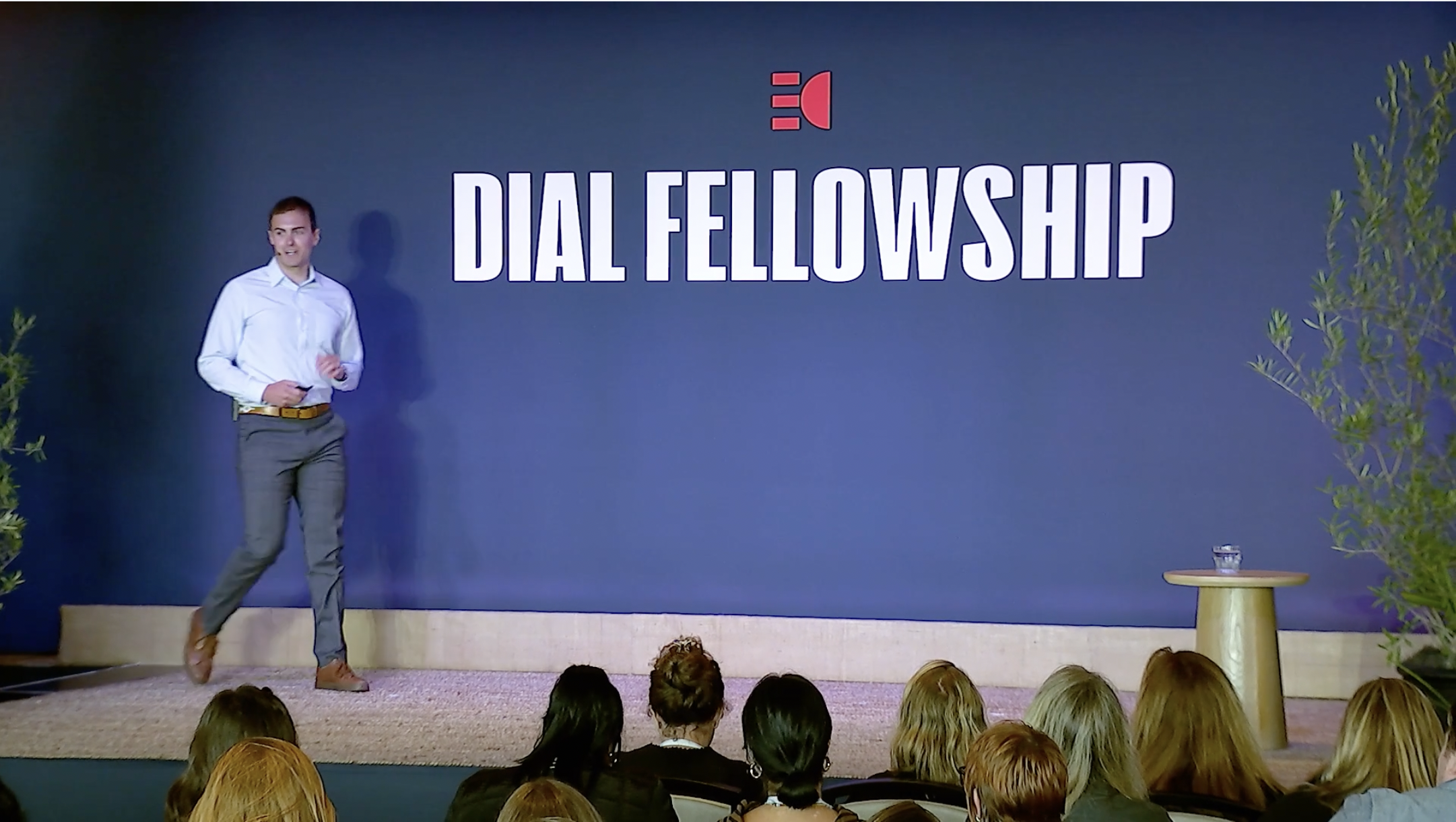Grayson Zulauf Selected as a Dial Fellow
Resonant Link co-founder Grayson Zulauf was selected through a rigorous application process to join the next cohort of Emerson Collective Dial Fellows. The 12 leaders, including Grayson, who comprise Cohort 4 of the Dial Fellowship are social entrepreneurs, lawyers, technologists, activists, and educators, all united by a vision of an equitable future.
Watch Grayson speak at the 2022 Dial Summit about the breakthrough wireless power he and his co-founders invented and how they’re improving human health, inside and out. A transcript of his talk is below, edited slightly for length.
Pacemakers keep our loved ones alive by delivering electrical pulses to the heart - but the downside is that the battery eventually runs out. And when it does, about every five to ten years, the people we love need an invasive surgery just to replace the battery. For someone who had a cardiac event when they were young, that could mean 8 or 10 dangerous surgeries in their life, just to replace the battery.
Pacemakers aren’t the only electrical therapy that sustains our health. We use electricity, and therefore batteries in the body, to treat diabetes, pain, seizures, depression, and a range of other ailments and life-threatening conditions. And electricity and human health have been intertwined for hundreds of years - the father of electricity was Queen Elizabeth I’s court physician way back in the 1600s.
Today, electricity is foundational for our health - and it goes beyond just powering our hearts to the health of our communities, our economies, and our world. Electricity is used to deliver clean water to our taps, for air conditioning to keep us cool, and increasingly, for vehicles that get us where we need to go. Health is built on electricity, inside and out.
Amazing as they are, the devices inside our body - the pacemakers, the pumps, the neurostimulators that keep many of us alive - are limited by their batteries and their power requirements. When the batteries inevitably run out, patients need surgery to replace the entire device. These surgeries are dangerous and expensive - in fact, insurance bills them at the same rate as the initial implant surgery. And some high-power implants, like pumps, require a wire permanently installed in the stomach, called a driveline. Drivelines cause infections and death. And some treatments are not even possible today because their power needs are so high. Or they aren’t available to everyone, for example, patients with high BMI because of the need to deliver power deep into the body.
Resonant Link was launched around a breakthrough wireless charging technology. Our coils, which sit at the heart of these systems, consume 5x less power because they use a unique structure of foil and thin film dielectric. Because of this high efficiency, we can finally non-invasively power these life-sustaining devices inside the body completely from outside of the body. That means we don’t have surgeries to replace batteries, no drivelines in our stomach to cause infections, and treatments that are available for all. It means we can harness the powerful connection between human health and electricity, with fewer of the downsides. Today, we have a dozen partners designing our wireless chargers into their devices, building with us toward our mission of eliminating these drivelines and battery replacement surgeries, forever.
Diabetes, heart disease, and pain are some of the greatest human health crises of our current time, and we are using wireless power to help solve them. But the connection between electricity and human health is bigger than just medical treatments. We need to electrify nearly every industry and much of our infrastructure to keep our planet healthy. In that vein, we are also using wireless power to charge vehicles and accelerate electrification to fight the global health crisis of climate change.
Wireless chargers can be added where vehicles already stop - at bus stops, stoplights, or loading docks - so we can recharge these vehicles during their work time. And because they are getting topped up during the shift itself, a fleet like FedEx or UPS can have fewer vehicles on the road, smaller batteries on every vehicle, and therefore, a less expensive fleet overall. With wireless charging, then, we can finally make electric vehicles cheaper and longer-lasting than a gas-powered counterpart, accelerating the transition to clean energy.
When garbage trucks go electric, for example, those drivers no longer spend all day on top of a loud, vibrating, and toxic engine. And with electric school buses, our kids will breathe less particulates every morning and afternoon.
At Resonant Link, we want to tell the stories of the people living with the limitations of wired electricity today, to show how wireless power can dramatically improve their quality of life and make new treatments possible for the first time. Because it’s through their lived experiences that we will all understand and be able to truly envision a world without wires, where everyone has access to life-changing and life-saving electric devices and vehicles. And we want to invite others to help us further our mission of creating a safe, strong, and sustainable future for all, with wireless electricity at the core of human health, inside and outside.

